#Thomas Pakenham
Explore tagged Tumblr posts
Text
Seems a bit dated in parts and somewhat more Eurocentric than it probably should be, but if you can hack your way through six hundred or so pages of it you will learn about the scramble for Africa.
0 notes
Note
Hi - big fan of your history posts, especially those on the French Revolution!
I wanted to ask if you could recommend any sources (books, articles, podcasts, videos) that would be a good introduction to Irish history. I only know the basics I'm afraid, and it's not always easy to know where to start from.
I'm personally mostly interested in the 18th (as well as 19th) century, but anything goes!
Only if you have time of course ✨
Okay so first of all sorry for taking thousands of years to answer this lmao, but for general Irish history a book like Thomas Bartlett's Ireland: a History is probably a good place to start if you have very little knowledge going in, or if you don't want to read a book this lecture series on youtube about various Irish rebellions is also good and should be sufficient for the 18th and 19th centuries as it starts with the United Irishmen and goes through 1916 (iirc). the Dictionary of Irish Biography is also a fantastic resource for learning about specific figures; they have pages for people who even god doesn't know about I stg.
For the 18th century probably the most accessible place to start is probably with 1798 and then working chronologically backwards, just because there's far more stuff on 1798 that's written for people who aren't already experts on the period than there is for many of the other events of the 18thc. the standard book that goes over the whole rebellion is The Year of Liberty by Thomas Pakenham, but I also often see the combination of The Summer Soldiers by ATQ Stewart and The People's Rising by Daniel Gahan recommended as good introductions to the period and having read both of them I generally agree, although do be aware that they're respectively very narrowly focused on the rebellion in east Ulster and the rebellion in Wexford/Wicklow so they leave out such things as the rebellion in Mayo and Napper Tandy's five second long "invasion" in Donegal. unfortunately I can't help as much with the 19th century but I hope this was helpful anyway ^-^
22 notes
·
View notes
Text
Tullynally Castle
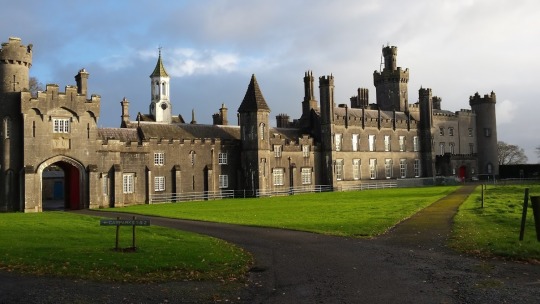



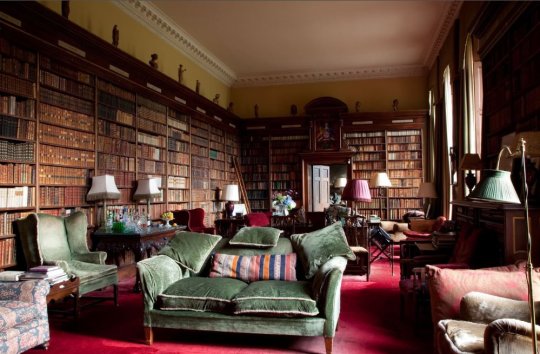


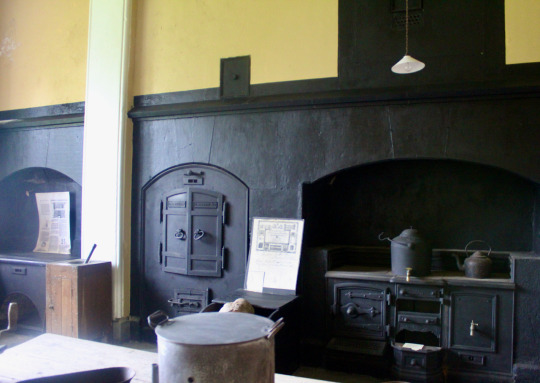
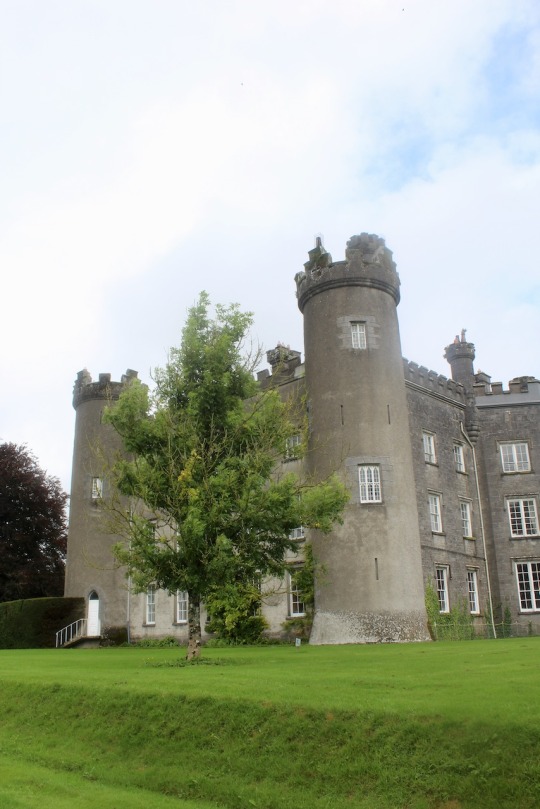



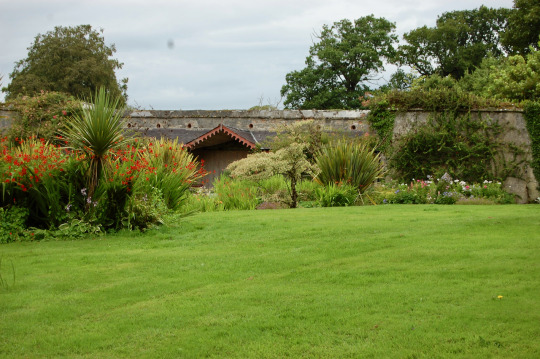
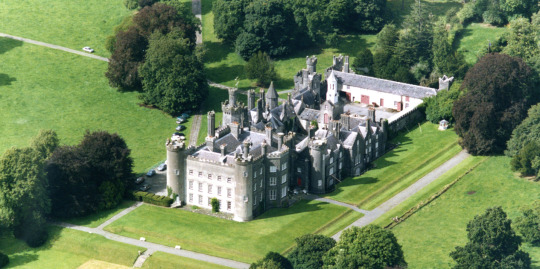
Tullynally Castle is located in County Westmeath in Ireland. In Norman times, this land was owned by the FitzSimons, but Henry Pakenham, a Parliamentary Dragoon, bought the estate and built a square plantation house on the property. In 1740, Henry’s grandson Thomas married heiress, Elizabeth Cuffe, the great niece of the last Earl of Langford. The Langford title was recreated for Thomas and the house was enlarged with another story. In 1803, the 2nd Earl of Langford wanted to turn the country estate into a gothic castle. To reach this end, he had towers and a row of battlements built. In 1820, he had more gothic improvements added, which included an octagonal dining room, and a Great Hall with such great acoustics that it’s still used for music today. The 2nd earl also added the first central heating system in a private house in Ireland. Thomas’ son Edward, the 3rd earl, doubled the size of the castle in 1840 by adding two castellated wings. One of the wings held servants’ quarters with a Victorian kitchen and a state of the art three-roomed laundry. The current owner, the 6th earl, also another Thomas, inherited the estate in 1961. As a passionate gardener, Thomas brought seeds to the estate from his world travels. Most of his plantings can be seen on the Forrest Walk, while his wife Valerie does most of the gardening on the walled gardens. The castle boasts over 120 rooms. The estate has 12 acres of gardens: a Chinese Garden with a pagoda, a Tibetan Garden of waterfalls and streams, a limestone grotto, terraced lawns, and two ornamental lakes. The Castle Gardens are open to the public and tours of the castle are done by appointment.
2 notes
·
View notes
Photo
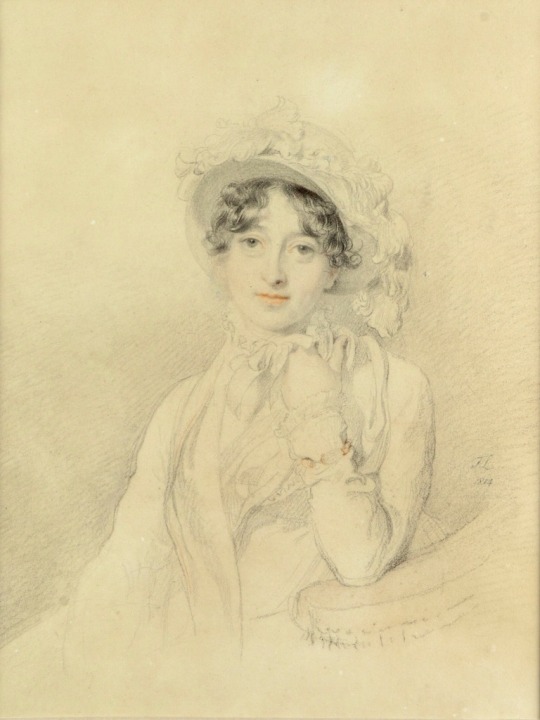
Catherine (‘Kitty’) Pakenham, Duchess of Wellington by Sir Thomas Lawrence, 1814
4 notes
·
View notes
Note
Why? One Pakenham for the other. But not the other one. Not Thomas, I want Ned.
i want a divorce
Will you take the kids?
16 notes
·
View notes
Text
Meetings with Remarkable Trees
Meetings with Remarkable Trees

The indifference towards old trees makes a mockery of our supposed new respect for the environment. (Thomas Pakenham)
There isn’t much that is as beautiful and majestic as a big old tree. Their huge crowns house birds and insects, the foliage gives shade in summer. In autumn they delight us with their changing colours. In winter the large naked branches look so eerie against the grey sky. Some…
View On WordPress
0 notes
Photo

Meetings with Remarkable Trees, Thomas Pakenham. I'm glad to have this book, as, after I'd bought it, in the 1990s, there was a storm in the UK, felling many old trees.
1 note
·
View note
Text
The Pakenham House---- Thomas Lowe House
The Pakenham House—- Thomas Lowe House
Any history on this home in Pakenham next to The General Store in Pakenham? KH McAlister15h · This is a photo of the home of Thomas Lowe and his wife Ann (nee Coburn), but I’m not sure if it’s the same house. (My grandmother remembered her grandfather, Thomas, giving her pennies when she visited as a child (in 1916) to buy candy at a store that was very close to the house.) – photo from Ken…

View On WordPress
0 notes
Text
Last Book I...
Yoinked from @literary-illuminati because it looked fun.
‣ Bought:
Random Sh*t Flying Through The Air by Jackson Ford. I picked it up last time I was in Waterstones because the title was funny, and the blurb sounded good. (I have started it, and the POV flip-flop is a bit wierd so it's been shelved for now)
‣ Borrowed:
The Potion Master by Liz Williams. My uncle lent me this one before Lockdown... and I still haven't finished it ^.^'
‣ Was Gifted:
Dragons of Autumn Twilight by Margaret Weis & Tracy Hickman. The Danish Gent gave this to me as part of my Xmas present after I told him I'd never read the Dragonlance books.
‣ Gave/lent to someone else:
N/A: I haven't really seen anyone to lend anything to.
‣ Started:
The Cabinet of Linguistic Curiosities: A yearbook of Forgotten Words by Paul Anthony Jones. I'm really enjoying this. It's a word per page, related to something that happened that day with a bit of explanatory blurb about the event and the world's meaning. It's been fun learning some of these archaic words.
‣ Finished:
The Pirates! In An Adventure with Napoleon by Gideon Defoe. The Pirates! series is always good for a nice quick, silly-fun read <3
‣ Gave 5 Stars:
Watch How I Soar, a Firefly Graphic Anthology. Written by Jeff Jensen, Ethan Young, Jared Cullum, Jorge Corona, and Giannis Milonogiannis; Art by Jorge Monlongo, Ethan Young, Jared Cullum, Jorge Corona, Giannis Milonogiannis, and Jorgi Perez; Colored by Jorge Monlongo, Ethan Young, Jared Cullum, Fabiana Mascolo, Giada Marchisio, and Maxflan Araujo; Lettered by Fabio Amelia.
I really enjoyed the dive into Hoban “Wash” Washburne's backstory, and alternate future. The art is fantastic, the stories were wonderful - just an all-round wonderful read.
‣ Gave 2 Stars:
Sea Journal by Lisa Woollett. The blurb for this is:
This beautifully illustrated book brings together a year’s wanderings along Britain’s shores with stories of their natural history, geology and evolution — from ancient myth to current science.
Which was what drew me in - I get to read and see photographs about all the types of shore on the Isles! Amazing! Only, it doesn't. There's mention of a beach in Norfolk, one on the Scottish coast, and all the rest take place in Cornwall, where the author lives. Sure the pictures were nice, and some of the text interesting, but I just really felt it had too narrow a scope for the broad claims in the burb and so it was a bit of a let down.
‣ Didn’t Finish:
The Company of Trees: A Year in a Lifetime's Quest by Thomas Pakenham. The detail about the trees is interesting; Pakenham's casual racism and sense of entitlement is not. I got maybe 1/4 into the book before I bailed because the narration style was just so difficult to read. I came here to learn cool things about trees and arboretums, not to feel like I'm listening to my 80yo uncle bitch about the natives.
Tagging: Anyone who fancies it
3 notes
·
View notes
Text
Anthony Powell: Dancing to the Music of Time (Hilary Spurling)
Anthony Powell: Dancing to the Music of Time (Hilary Spurling)
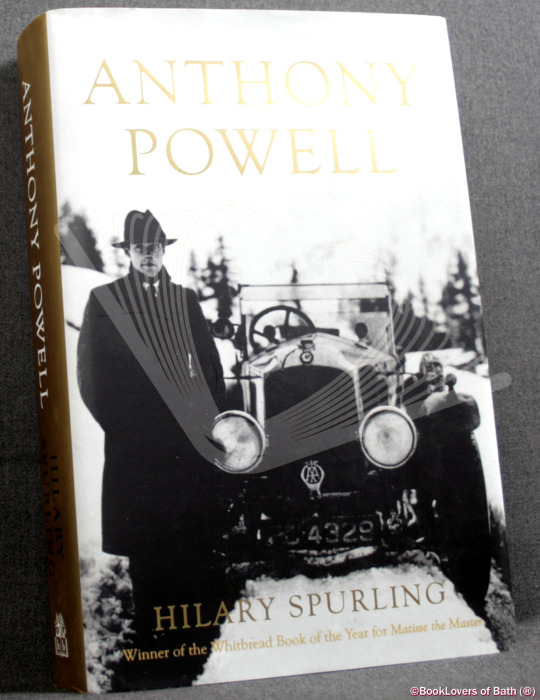
Anthony Powell: Dancing to the Music of Time (Hilary Spurling) soon to be presented for sale on the wonderful BookLovers of Bath web site!
Published: London: Hamish Hamilton, 2017, Hardback in dust wrapper.
Contains: Black & white photographs; Colour photographs; Black & white drawings; Photographic end papers & blanks; Title page vignette;
>From the cover: Anthony Powell ended up as one of the…
View On WordPress
#0241143837#anthony powell#books written by hilary spurling#chantry somerset#chester gate#constant lambert#duckworths#edward longford#english authors biography#enid firminge#first edition books#gerald reitlinger#john heygate#lamberts woodgate#malcolm muggeridge#marion coates#novelists biography#pakenham hall#roland gant#thomas balston
0 notes
Text
Historical References in What Are You Going to Do With Your Life - Chapters 10-12
Chapter 10
Boleyn mumbles something about a priest. W. S. Pakenham-Walsh (1868 - 1960), Vicar of Sulgrave, Northhamptonshire, had a strong interest in Anne Boleyn. He claimed to have a series of spiritual experiences after praying at Boleyn’s burial site, and contacted clairvoyants to channel her spirit in the hopes she might become his guardian angel. He also claimed in his diary that he had contact with Henry VIII and other notable members of the Tudor court.
While witchcraft was often punished via the death penalty, Henry VIII made the law explicit in 1542 (though it was later repealed no later than 1547, under Edward VI). Several witchcraft laws were made in the UK over the years, in 1563, 1604, 1649 and 1735. These were all repealed and replaced with more general consumer protection laws, and the last person to be indicted for witchcraft (under the 1735 act) was imprisoned in 1944.
Tarot was a regular set of cards for most of its history, used in various, but similar, trick-taking card card games. It became associated with ancient wisdom in 1781, when Antoine Court de Gébelin wrote an essay claiming (with no evidence) that ancient Egyptian priests had distilled the mystical Book of Thoth into the cards.
“Psychic is Greek, and clairvoyant is French. One is about thinking, and the other is about seeing.” Psychic comes from the Greek word psychikos (‘of the mind’) and clairvoyance is a combination of two French words (‘clear’ and ‘vision’). Catherine of Aragon was known to speak both French and Greek, as well as Latin, her native Spanish, and English.
Cunning man (or woman) was another word for folk healers.
In 1532, Catherine Parr’s brother-in-law from her second marriage, William Neville, was accused of treason for allegedly predicting the king’s death and his own ascension as Earl of Warwick (a title made extinct during the Wars of the Roses, but would be recreated in 1547 and twice after that). He went to at least three magicians to confirm this prediction, all of which agreed that it was meant to be true (it wasn’t). One of these magicians was Richard Jones of Oxford, who was imprisoned and questioned on the matter. He did his best to exonerate himself of responsibility. I have found five references confirming his existence – but many of them claim he had a sceptre he used to ‘summon the four king devils’, which he used for divination purposes.
Chapter 11
Jones of Oxford was taken in for questioning as part of the Neville affair, and he did his best in his confession to exonerate himself. Neville’s claims of a prophetic dream showing himself as Earl of Warwick were now a “fair castle” which Neville assumed must be the castle of Warwick, and a shield with “sundry arms I could not rehearse”. He did admit to writing “a foolish letter or two according to [Neville’s] foolish desire, to make pastime to laugh at”. No treason, just jokes, please don’t execute me Thomas Cromwell. Jones claimed to take his alchemy seriously, however, and wrote that “To make the philosopher’s stone I will jeopard my life, so to do it,” if the king so wished. He would require twelve months “upon silver” and twelve and a half “upon gold”, and was willing to be imprisoned while he worked. Jones made a similar offer to Cromwell, but there is no evidence either man accepted. Jones was released in exchange for revealing incriminating evidence against another figure of interest. The other magicians caught up in this incident, William Wade and a man known only as ‘Nashe’, had perfected their disappearing act and were not sent to the Tower.
There is a story that Elizabeth I attributed the destruction of the Spanish armada in 1588 to John Dee’s wizardry. Given that, as mentioned, Dee was out of favour with Elizabeth at the time, this is likely untrue.
Elizabeth I’s death was in March of 1603, after she became sick and remained in a “settled and unmovable melancholy”, sitting on a cushion and staring at nothing. The death of a close friend in February of that year came as a particular blow – that of her second cousin and First Lady of the Bedchamber, Catherine Howard.
James I (or James VI, depending on where you’re from)… James I of England was also James VI of Scotland. His mother was Mary Queen of Scots, who was executed by Elizabeth I, and his great-grandmother was Margaret Tudor, Henry VIII’s sister.
“Anna, born Duchess of Jülich, Cleves and Berg.” This was how Anna signed hers’ and Henry’s marriage treaty, known as the ‘Beer Pot Documents’, because someone drew a stein at the bottom.
Bowling, as a game, can trace its origins back to ancient Egypt, and has been quite popular the world over throughout history. Henry VIII was an avid bowler himself (when Hampton Court was remodelled, bowling alleys were included with tennis courts and tiltyards), but banned the sport for the lower classes. The law against workers bowling (unless it was Christmas and in their master’s presence) was repealed in 1845.
We return to the ground, because from it we were taken. Paraphrasing of Genesis 3:19.
The (possible) first appearance of the word ‘alligator’ in the English language is from Romeo and Juliet. The description of The Apothecary’s shop mentions “a tortoise hung, an alligator stuff’d, and other skins of ill-shaped fishes”. Traditionally, medieval apothecaries and astrologers kept skeletons, fossils, and/or taxidermied pieces on display to demonstrate their worldliness.
The anger over calling the alligator ‘William’ could come from Parr, or from Anna. Her brother’s name, Wilhelm, is often anglicised as William.
Midsomer county does not exist and never has. It’s the setting for the long-running mystery TV show Midsomer Murders. Incidentally, Catherine Parr’s native county of Westmorland existed at one point, but no longer does (the area is now in the county of Cumbria). She is not the only English-born queen who this applies to; Jane Seymour’s Wiltshire and Anne Boleyn’s Norfolk still exist (and have since antiquity), but Katherine Howard was most likely born in Lambeth, which would have been in the county of Middlesex at the time. The area is now under the ceremonial county of Greater London.
“Honestly? Margaret Pole’s was worse.” Margaret Pole, Countess of Sailsbury and the last of the House of York, was kept in the Tower of London for two and a half years for her supposed support of Catholicism’s attempts to overthrow the king, before being informed of her death ‘within the hour’ on the 27th of May, 1541. She answered that she did not know the crime of which she was accused (and had carved a poem into the wall of her cell to that effect), but went to the block anyway. It allegedly took eleven blows from the inexperienced axeman to separate her head from her body. There is another story that she tried to run from the executioner and was killed in the attempt, but this is likely a fabrication. Regardless, pretty much everyone thought this was not only a bad idea on Henry’s part (killing Margaret removed any leverage the king had on her rebellious son, Cardinal Reginald Pole), it was also pointlessly cruel and a painfully undignified end.
(She was also Catherine of Aragon’s lady-in-waiting, and governess to Mary at several points.)
That everyone around her, bar a few visitors, would actively benefit from her death… Yet another quote of Elizabeth Tyrwhitt’s testimony: Parr, on her deathbed, claimed she was “not well-handled” by those around her; “for those that be about me careth not for me, but standeth laughing at my grief, and the more good I will to them, the less good they will to me”.
Chapter 12
According to a lady-in-waiting, Anne Boleyn claimed she would rather see Catherine of Aragon hanged “than have to confess that she was her queen and mistress”. This incident is probably the origin of the lyric “somebody hang you!” from Don’t Lose Ur Head.
Catalina uses a few Spanish phrases in this chapter, which don’t get directly translated. The first, No se hizo la miel para la boca del asno, directly translates to ‘Honey is not made for the donkey’s mouth’, and essentially means ‘Good things shouldn’t be wasted on those who won’t appreciate them’. Lavar cerdos con jabón es perder tiempo y jabón is ‘Washing pigs with soap is a waste of time and soap’, and is meant to indicate some things aren’t worth the energy.
…like that dream she has where she is cut up by a servant… An autopsy was done on Catherine of Aragon as part of the embalming process, which revealed the growth on her heart. This was done by the castle chandler (a dealer or trader) as part of his official duties.
Jane Seymour got rid of most of the hallmarks of Anne Boleyn’s tenure during her own queenship. The extravagance and lavish entertainments were banned, along with the French fashions Boleyn had introduced – including French hoods, which Boleyn is wearing in the portrait we have of her. Jane, as mentioned, wore a gable hood in her portraits.
“I don’t know why I’m so surprised that people care about what I say.” In the words of nineteenth century proto-feminist Agnes Strickland, Jane “passed eighteen months of regal life without uttering a sentence significant enough to warrant preservation”, which is kind of a mean thing to say. Seymour certainly said things during this time, we know this from reports, but there aren’t any direct quotes from her during her time as queen.
Here’s the painting mentioned, from 1545, during Catherine Parr’s tenure. Jane is on Henry’s left.
It was only after her death that Henry ‘loved’ her, but she is certain that he mourned for only for his own loss. There are reports that, during Jane’s labour, doctors advised Henry he might lose either Jane or Edward. Henry is claimed to have replied, “If you cannot save both, at least let the child live, for other wives are easily found.”
Countdown is a British television game show that revolves around word and number puzzles. It has been going for almost forty years, and is one of the longest-running game shows in the world, with over 7000 episodes.
“I saw a ghost bear kill someone, once.” Anne isn’t making this up. Supposedly, the incident occurred in 1816, when a Yeoman Warder saw a ghostly bear somewhere in the Tower of London. Terrified, he tried to stab it with his bayonet, only for the weapon to go through the image and strike the door behind it. The guard died of shock later on. A similar event happened in 1864, where two guards witnessed “a whitish, female figure” gliding towards one of the soldiers. The soldier in question charged this figure, only to go straight through it, upon which he fainted.
Elizabeth was imprisoned in the Tower of London for a little over two months in 1554, as a result of Wyatt’s Rebellion against Queen Mary. The rebellion was also the likely reason for the execution of Lady Jane Grey – both she and Elizabeth were Protestants in line for the throne, and therefore ‘more suitable’ as ruler. Both Elizabeth and Jane Grey denied any involvement, but the latter’s father and brother (also executed) were direct contributors.
“… you did die, Elizabeth was really upset about it…” Elizabeth took the news of Parr’s death badly. She refused to leave her bed, and was unable to go a mile from her residence, for five months following Parr’s passing.
Not because she liked that bearded potato man, God no… I found this deeply cursed engraving (first produced in 1544) in one of my books on the six wives, and now I want you all to suffer with me.
Anne of Cleves reacted poorly to being told her marriage would be annulled – some accounts say she fainted, others says she cried and screamed. Both could be true. The reasons given were threefold – One, the marriage was unconsummated (From testimony given by two servants, Anne thought a kiss goodnight counted as consummation – likely untrue, but this is the only reason that actually has merit). Two, Anne was precontracted to Francis of Lorraine (Untrue – the betrothal would only take effect if Anne’s father paid the dowry, and he didn’t). Three, Anne was not a virgin as claimed, based on the description of her ‘breasts and belly’, a Tudor way of saying Anne had previously given birth (untrue, and conflicts with the testimony for reason one). The annulment went through without Anne’s involvement, but (probably looking at the examples of her three predecessors) she accepted the ruling and kept herself from being banished, beheaded or otherwise.
(Other fact that has no bearing on reality – while researching Anne of Cleves, one of the pages that came up was The Simpsons Wiki. Apparently she’s the only wife who can claim the honour of having been in two episodes. :/)
Dogs don’t need to answer for their sins, they don’t have any. Katherine Howard was reportedly fond of animals in general, but had a particular soft spot for dogs.
She did the right thing. She told the truth. She died for it. Katherine Howard insisted, to the end, that she had no pre-contract of marriage to Francis Dereham. Would she have survived if she said she did?
9 notes
·
View notes
Note
Hi! So this is gonna sound weird, but I’ve kinda been learning about Irish history backwards? Like, I started with the Troubles (bc of family involvement), then back to the 1916 rising which got me more interested in the people involved which took me further back and etc etc. I know I’ve been doing it “wrong” but I’m just starting to come up to the 1798. Do you happen to have any recommended readings or particular persons of interest to read? Any collections of primary sources would be more than welcome!
Secondary sources I would recommend:
The Year of Liberty by Thomas Pakenham - about the rebellion in general
The People's Rising by Daniel Gahan - about the rebellion in Wexford
The Summer Soldiers by ATQ Stewart - about the rebellion in Ulster
Wolfe Tone: Prophet of Irish Independence by Marianne Elliott - about Wolfe Tone
The Life and Times of Mary Ann McCracken by Mary McNeill - technically this is just about Mary Ann but I think it's pretty good for Henry Joy McCracken too because there aren't many biographies of him
Orangeism in Ireland and Britain 1795 - 1836 by Hereward Senior - obviously exercise caution on whether or not you think you can mentally handle this subject but book about loyalism during 1798
Castlereagh: War, Enlightenment, and Tyranny by John Bew - about Lord Castlereagh
2 things that I would also recommend reading about for context are the French Revolution and the British radical movement of the late 18th century. for the French Revolution 1 book I would say is good is Liberty or Death by Peter McPhee and for the British radical movement... the book The English Jacobins by Carl B Cone does a good enough job
Primary sources:
The Memoirs of Theobald Wolfe Tone by Theobald Wolfe Tone - title is pretty self explanatory. It's Tone's account of his own life + his diary
The United Irishmen, Their Lives and Times by RR Madden - this is considered to be the 1st history of the rising & was written with the help of many people who lived through it, so it includes a lot of first hand accounts. HOWEVER. beware that Madden was your archetypical mid 19th century Catholic Irish nationalist and the bias created due to that shows through in every single part of these books
Memoirs of the different Rebellions in Ireland by Sir Richard Musgrave - this is another very early history of the rising, also written with the help of people who lived through, also including a lot of first hand accounts. HOWEVER. Musgrave is like Madden's Orange counterpart in that this book is also wildly biased and should also be read with a degree of caution
Personal Narrative of the "Irish Rebellion" of 1798, Sequel to Personal Narrative of the "Irish Rebellion" of 1798, and History and Consequences of the Battle of the Diamond by Charles Hamilton Teeling - 3 accounts of politics in Ireland in the 1790s written by someone who as a young man led the Catholic paramilitary the Defenders
The Drennan letters (a collection of letters that Belfast doctor William Drennan and his sister, Martha McTier, wrote to each other between the 1770s and 1820s), if you can find them, are another great primary source on both the United Irishmen & on what life was like back then in general, as are the McCracken letters, which I know are available free online somewhere I just can't remember where exactly I got the pdf from
There are a lot of them but if you're interested in primary sources you might also read some of the political pamphlets/books that were going around back then -- the most famous that come to mind in this context are Wolfe Tone's Argument on Behalf of the Catholics in Ireland, Thomas Paine's The Rights of Man, and Edmund Burke's Reflections on the Revolution in France but there are wayyy more than that and at least some of them are on the internet archive
201 notes
·
View notes
Text
Battle of New Orleans and the rise of Andrew Jackson
205 years ago today the Battle of New Orleans was fought in the War of 1812. The battle is probably among the most remembered events in the War of 1812, along with the Burning of Washington DC and the Battles of Baltimore and Lake Erie. The war itself and its reasons for fighting are largely gone in the public’s memory, even in the participating countries. However, the war was consequential in some ways and this battle though fought after the peace treaty was signed and before news of its signing reached American shores would be consequential not in a military sense but a psychological one.
When one thinks of the War of 1812, most in the world might think of that year as being exclusively about Napoleon Bonaparte’s Invasion of Russia and the Patriotic War fought there which turned the tide of the Napoleonic Wars, but related to those wars and namely due to Britain and France’s rivalry was the War of 1812 fought in North America between the United States and Great Britain. It was the second and final bloody war fought between the two nations.
The war resulted as part of unresolved issues from the American Revolutionary War which ended in 1783 and granted the US all the territory east of the Mississippi River and south of the St. Lawrence River and Great Lakes, with common shared usage of all these waterways. The issues were in part the refusal of the British to abandon all their forts in these areas, namely in the current upper Midwest of the United States, then known as US Northwestern Territory and later the Indiana and Illinois Territories. The modern states of Ohio, Indiana, Michigan, Illinois and Wisconsin were the very threshold of the American wilderness and not widely settled aside from the fur trade and Native American tribes. This lead to another issue, Native American tribes in this territory had taken issue with increasing American settlement. 1785-1795 saw a ten year war between the US and a confederacy of various tribes in this area, called the Western or Miami Confederacy, which the Americans defeated after the Battle of Fallen Timbers. Increasing tensions between the Native tribes and a new confederacy formed under a Shawnee named Tecumseh (1768-1813) against American settlement and being armed by the British who sought to create a Native American controlled buffer state between its Canadian colonies and the US was another source of tension.
The final issue and most pressing was that of impressment, the act of taking sailors from a foreign nation and forcing them to serve in another against their will. America had remained neutral during the French Revolutionary Wars and subsequent Napoleonic Wars but the British Royal Navy being the world’s most powerful was largely making it harder and harder for America to remain neutral. It sought to disrupt American trade with France and it also sought to shore up its manpower shortages in naval service. To do this it began the act of impressment by stopping American merchant and naval vessels and seizing sailors and forcing them into British naval service. At first it was done on the grounds that some British sailors had ran away into American service and therefore they were collecting them back. The reality became by 1807 though, namely the famed Chesapeake Affair that American sailors themselves were also being taken against their will. Thomas Jefferson had the Embargo Act of 1807 passed in an effort to prevent trade with both France and Britain by removing crucial American markets and hit their economies to the point they would stop. America saw impressment as a violation of a neutral nation’s rights and national dishonor. The act only hurt American trading interests instead and was repealed 15 months later.
By June 1812, these combination of events lead to the declaration of war by the United States under President James Madison against Britain which was locked in the Peninsular War in Spain against Napoleonic France at the time. The war really caught both sides unprepared and what followed were two and a half years of blundered offensives by both sides and mostly successful defenses as well. America still used a state militia system to supplement it’s small regular army which gave it numerical superiority to the British regular army in Canada. However, the British navy effected a blockade of the American Atlantic Coast which hurt shipping and trade. However, despite America’s numerical superiority and Britain’s best troops being in Spain, the US leadership was incompetent in many ways and the militias often only followed state loyalty rather than national and this over and over bungled American plans to overtake Canada. The British to make up for a lack of regular support had Canadian militia and Native American tribes serve as auxiliary forces which fought with great success in several early campaigns. By 1813 however, America fought back in some notable ways. The Americans retook Fort Detroit in Michigan after its capture and notably defeated the Royal Navy in the Battle of Lake Erie. Interestingly the US won many single ship duels against the Royal Navy all throughout the war which somewhat tarnished the Royal Navy’s reputation and confounded the British, giving America sorely needed bright spots for its failed offensives into Canada. The Americans then killed Tecumseh at the Battle of the Thames ending his confederacy and British support for an Native American buffer state. To top it off, America burned York (Toronto) the capital of the British colony of Upper Canada destroying its parliamentary buildings and taking the Speaker’s mace, which America kept as a war trophy until 1934 when President Franklin Roosevelt gave it back as a goodwill gesture.
1814 was intended to be the year of British revenge. In spring 1814, Britain had finished the Peninsular War with the defeat and first abdication of Napoleon in France and his exile to Elba. New and experienced troops were transferred to North America. Three British offensives were planned to end the war in their favor. The first was the August 1814 invasion of Washington DC and Maryland. The British entered Washington DC and in revenge for the burning of York, Upper Canada by America the year before, they burnt the abandoned US Capitol building after holding a mock legislative session, they also burnt the abandoned White House after holding dinner there along with other government buildings. The US government however had evacuated ahead of time to evade capture, so the act of burning Washington was less a strategic win and more of a symbolic revenge. A hurricane hit right after the burning and its rains put out the fires. The British then attacked Baltimore, Maryland hoping to destroy the important American commercial center and its naval facilities but were defeated and from this battle, America’s national anthem the Star Spangled Banner came, written by witness, Francis Scott Key. The second offensive, was the Battle of Lake Champlain fought in upstate New York and Vermont. Its goal was to weaken American naval power on the lake and the St. Lawrence River and to cutoff public support for the war in New England from the rest of the US (New England was against the war in many ways due to their lucrative trade with Britain being hurt). A combined land and naval battle took place in September 1814 at Plattsburgh, New York. The Americans were like at Baltimore triumphant and the British repulsed. The third and final planned offensive was to take place in the American South, by taking its major commercial center at New Orleans, Louisiana.
As the plans for New Orleans to be attacked were being made in autumn 1814 and the British and Americans were diplomatically trying to find a resolution to the war’s end in a neutral location. The chose the city of Ghent, then in the Kingdom of the Netherlands and now modern Belgium. Even as negotiations for peace were under way, the British Secretary of War, Henry Bathurst instructed Major General Edward Pakenham to lead the attack. Pakenham was a veteran of the Peninsular War and brother in law of General Arthur Wellesley, the Duke of Wellington and soon to be hero of Waterloo. Bathurst was concerned the Americans would not ratify any peace deal and so he thought an attack and occupation of New Orleans might strengthen the British position to end the war in terms favorable to them. The attack was planned for late December 1814 or early 1815. As it turned out the British and American delegations lead by Lord Gambier and future US President John Quincy Adams respectively signed a peace treaty on Christmas Eve 1814, the treaty essentially restored the status quo before the war. Neither side would gain new territory or lose any territory, a true military and political stalemate. Though unarguably, the British allied Native American tribes lost the war militarily and politically when British support for them having their own state dropped and the British abandoned all held forts captured during the war and held prior to the war in American territory. American settlement and military encroachment on these lands would be overwhelming and irreversible to the Native tribes in the coming years. With the Treaty of Ghent signed, it now awaited ratification in Britain’s Parliament and America’s Congress. News being what it was in those days traveled by ship and would take weeks to reach American shores. Pakenham’s attack on New Orleans would commence even though the war was technically over unbeknownst to him or his troops. In New Orleans they would run into the man in charge of its defense and a man with personal vendetta against Britain, Brevet Major General Andrew Jackson.
Andrew Jackson (1767-1845) was born the son of Scots-Irish immigrants from Ulster, Ireland in the Carolinas prior to the American Revolution. His father died shortly before his birth and during the American Revolution he served as a courier for the American Patriot army along with his brother. However, a few events during the Revolution would shape his life ever after. He first lost his brother Hugh to heat exhaustion in the wake of British victory, then Jackson and his brother Robert were taken prisoner by the British in 1781 and famously was ordered by a British officer to clean their muddied boots, Jackson refused and was slashed at with a sword by the officer, it left scars on his arms and face the rest of his life. Their mother however secured their release and on the return journey home, nearly starved to death when Robert contracted small pox and died. Then his mother volunteering as a nurse for American prisoners in British custody in Charleston, South Carolina contracted the same disease and died herself. Andrew Jackson was complete orphan by the age of 14. He always blamed the British for the loss of his family and his personal wounds and near death experiences. Jackson was man to hold grudges all his life. Overtime, Jackson became a self-made lawyer, landholder and businessman of some success, moving to Tennessee. There he became a member of US Congress briefly and became a wealthy slave plantation owner and earned a reputation a a tough man, fighting in a duel when his wife’s honor was insulted, he killed his opponent and suffered a bullet lodged in his chest near his heart the rest of his life, never to be removed. He also was elected to the lead the Tennessee militia and during the War of 1812 fought in the Southern Theater against the British allied Creek tribe in the Creek War. This war ended in American victory which destroyed Creek resistance in the Southeastern US. This gained Jackson some level of fame, but he was made ultimately given the responsibility of defending New Orleans against any impending British attack and rushed to its defense following a brief occupation of Pensacola Florida, then a Spanish colony. He earned the nickname, Old Hickory from these campaigns, his men named him this affectionately for his fierce temper and personal toughness, tough like hickory wood
In December 1814, Pakenham’s force landed in Louisiana supported by the Royal Navy squadron of the Gulf of Mexico under the command Admiral Alexander Cochrane. Jackson as acting military governor of New Orleans, placed the city under martial law. He then began planning its defense and organizing his army. In late December he heard that British troops had landed, in anger he launched a night attack against their camp, declaring “By the eternal, they shall not spend a night on our soil!” The night attack didn’t dislodge the British but it inflicted casualties and made them realize what they initially thought would be an easy conquest would be more difficult. Jackson fell back the city and the British continued their gradual approach which was hampered by the swampy conditions of Louisiana. Jackson’s new plan was to build a so called Line Jackson, an entrenched position of earthworks, redoubts and parapets four miles south of the city manned by infantry and artillery which would defend the city it stretched from banks of the Mississippi River into a swamp on plantation field, the idea was to block the British and prevent being flanked or outmaneuvered by the river or swamp as natural defenses. he also placed artillery on high ground opposite side of the river to further defend the line.. Then he had a second line prepared as well. His army totaled 5,700 men at most. It was a true American mix of 968 US Army, Marine and Navy regulars from all over the country but mostly consisted of southern militia volunteers from Louisiana and Tennessee primarily but also including Mississippi and Kentucky contingents. It also included freed and enslaved black Americans, Choctaw Native Americans and even pirate smugglers under French pirate Jean Lafitte who helped man the artillery with great skill. The army spoke a mix of English, French, Spanish, Choctaw and Louisiana Creole.
The British army would number 8,000 land troops giving them numerical superiority The composition of the British army was diverse too though it mostly consisted of British regulars including Scottish Highlanders but had some all black regiments from the British Caribbean or West Indies as it was known then and a small set of support from Native American allies too. Pakenham’s plan was to first have a set of troops cross the river and overtake the American cannons guarding any approach on the river’s west bank. Those guns would then be swiveled to the east to fire upon Line Jackson and flank the Americans with an enfilade. Meanwhile, Pakenham somewhat forced by geography due to the swampy terrain on the British right flank would have to use his superior numbers and the flanking enfilade from their left to overwhelm the American lines. He thought this possible in part because of the discipline and experience of his troops and the low regard for American troops, especially militias that made up Line Jackson’s defense.
The Battle of New Orleans began on early morning January 8, 1815 in darkness and under heavy fog. Pakenham’s flanking detachment of the 85th Regiment of Foot and Royal Marines under Colonel William Thornton crossed the river and attacked the flank of the American artillery guarding the west bank, successfully they captured the guns despite casualties and logistical difficulties due to bad terrain. Thornton himself was wounded and this was to be the only British success of the day though it proved inconsequential to what transpired over the next half hour. There is debate about whether the Americans spiked the guns rendering them useless of it the British actually carried out an ineffective enfilade. Meanwhile as the fog lifted on the field of battle, the main British force was subject to American artillery and small arms fire. It quickly laid waste to the British caught out in the open field. Some British troops reached the 8 foot deep and 15 feet wide canal dug in front of Line Jackson’s earthworks, they were pinned down and the 44th Regiment of Foot tasked with supplying ladders needed to scale the canal and earthworks simply forgot them, this would later land its commander Lt. Colonel Thomas Mullins a court marital for negligence. As a result the British advance was grinding to a halt in front of Line Jackson, some stayed pinned in place and fought where they could but the 93rd Highlanders Regiment was ordered to attack the furthest redoubt on the American right flank on the banks of the river. The Highlanders initially took the redoubt but couldn’t hold it without support, all the men on the redoubt were killed, wounded or captured once the American 7th Us Infantry Regiment arrived to retake it. There were cases of the British simply scaling the earthworks by hand in groups but they too were mowed down by musket fire and grapeshot from the American cannons at close range or they were grabbed and disarmed by the Americans and taken prisoner. Pakenham and his second in command General Samuel Gibbs were both fatally wounded by American grapeshot. In Pakenham’s case he was injured in the left knee first which killed his horse as well. As he was being helped up to a second horse near the front of the line, he was hit a second time in the right arm and finally a third whiff of grapeshot penetrated his spine, killing him as he finally mounted his second horse, Pakenham and Gibbs deaths lead to confusion on the British side, no orders on how to continue to advance in the face of withering American fire and no commands to retreat, many were killed or wounded outright and others are recorded by some sources as simply playing dead to distract from enemy fire. Finally, General John Lambert in command of the British reserve realized command fell to him ordered a retreat with the reserve called up to cover the British retreat. Thornton’s detachment on the west bank of the river withdrew from their flanking position unable to change the tide of the battle.
The battle was over in roughly a half hour though there is some debate on the American casualties, they were comparatively light with most sources saying 55 dead and 185 wounded though Jackson claimed only 13 Americans died. The British on the other hand suffered 386 dead, 1,521 wounded and 552 captured or missing in action. The British lost their two top commanders in the field and numerous other officers as well. The British would withdraw from Louisiana and would fail to take another American fort before successfully capturing Fort Bowyer near Mobile, Alabama in February 1815. Upon which they planned to attack the city proper when news of the Treaty of Ghent ending the war in stalemate finally arrived, they withdrew. New Orleans was for the British an abject failure, made all the more gutting now knowing the war was over.
For the Americans, New Orleans had a galvanizing effect on their psyche, the news of the victory at New Orleans reached many Americans before news of Ghent’s peace treaty did giving the false impression to some that Jackson’s victory contributed to the peace signing. It helped usher in the so called “Era of Good Feelings” where Americans felt a sense of camaraderie and claimed the War of 1812 had been a victory even though it was a practical stalemate. Americans had achieved at New Orleans a victory in their “Second War of Independence” against Britain. In the coming decade mostly under President James Monroe, there would be little internal strife and relative economic prosperity which granted name the “Era of Good Feelings”. Also the War of 1812 ended the Federalist party, leaving only the Democratic-Republicans in control as a one party system and ending the so called First Party System in American politics. Britain and America would never go to war despite some occasional scares up through the American Civil War again and go on to become very close allies during the 20th and into the 21st centuries.
For Andrew Jackson, New Orleans changed everything, he was the national hero of the war and a household name ever after. His popularity was such that he would become senator for Tennessee and then campaign for President in 1824 in a contentious election against then Secretary of State John Quincy Adams, the campaign lead to political mudslinging and eventually due to a lack of majority in the Electoral College for any candidate, a vote was held in the US House of Representatives leading to Adams winning the Presidency. Jackson returned home and networked until the next election, he would win the equally contentious 1828 election decisively against Adams and serve two full terms as President of United States (1829-1837) in very consequential fashion, establishing the modern day Democratic Party and influencing Democrat-Republicans opposed to him to become the Whig Party forming the Second Party System. The era of good feelings started by Jackson would end with Jackson, the Jacksonian Era had begun...

#war of 1812#USA#new orleans#military history#On this day#britain#American Revolution#andrew jackson#tecumseh#era of good feelings#jacksonian#napoleonic wars
3 notes
·
View notes
Photo




(via Scorched Earth : NPR)
The term "concentration camp" is most associated with Nazi Germany and the systematic killing of Jews during World War II. But colonial powers used concentration camps at the turn of the 19th century to crush rebellions. In this episode, how a war between Britain and South African Boers gave rise to some of the first camps.
If you would like to read more on the topic, here's a list:
Emily Hobhouse: Beloved Traitor by Elsabé Brits
The Concentration Camps of the Anglo-Boer War by Elizabeth van Heyningen
Black People and the South African War: 1899-1902 by Peter Warwick
The Boer War by Thomas Pakenham
#@throughlineNPR#concentration camp#Nazi Germany#colonialism#british empire#Concentration Camps of the Anglo-Boer War#anglo war#South African Boers
3 notes
·
View notes
Text
Also, Thomas Pakenham's "Scramble for Africa" apparently caught some flak for mainly relying on primary sources - e.g. stuff written by those what were doing the scrambling in the first place. And I suppose I can see the motivation in this flak. Still seems a little unfair though.
Not once in the book did I ever get the impression that what was happening was a good thing, and it wasn't exactly shy in telling you of what the colonists did.
But I'm not a historian, so maybe I have poor standards.
At any rate, it's important to read widely, and for deeper understanding of King Leopold - which we should all have, I think - I recommend reading both Scramble for Africa and Leopold's Ghost. Why not?
The former is dryer, I feel, while the latter is attempting to evoke a response. Both paint a deeply unpleasant picture.
And both also have pictures. Which I will not show you...
1 note
·
View note
Text
[Download PDF/Epub] The Scramble for Africa: The White Man's Conquest of the Dark Continent from 1876 to 1912 - Thomas Pakenham
Download Or Read PDF The Scramble for Africa: The White Man's Conquest of the Dark Continent from 1876 to 1912 - Thomas Pakenham Free Full Pages Online With Audiobook.

[*] Download PDF Here => The Scramble for Africa: The White Man's Conquest of the Dark Continent from 1876 to 1912
[*] Read PDF Here => The Scramble for Africa: The White Man's Conquest of the Dark Continent from 1876 to 1912
White Man's Conquest of the Dark Continent from 1876 to 1912
0 notes